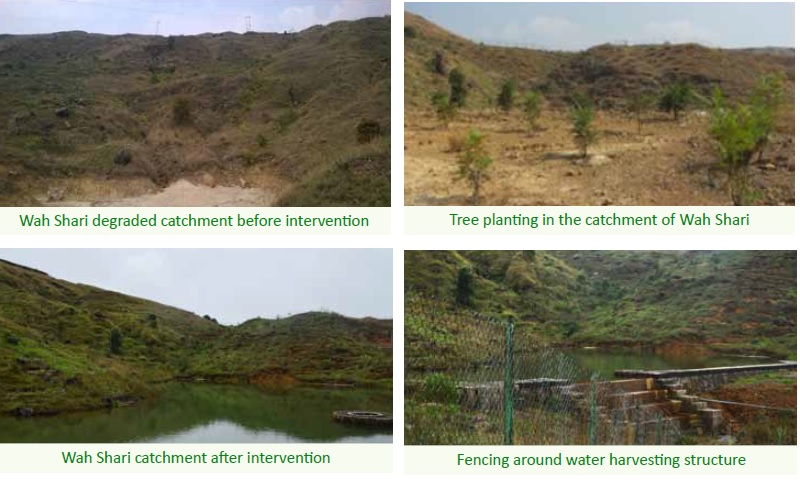
The rains of Meghalaya are proverbial. Famous across the world as the place that gets the highest rainfall, Meghalaya’s landscape is defined by its innumerable beautiful rivers, springs, lakes, and waterfalls. Given that 'Water' and Meghalaya appear to be almost synonymous, it is remarkable to think that there could be problems of water scarcity in Meghalaya, or that there could be a lack of clean drinking water in some communities. And yet the seemingly impossible is starting to happen. Over the years, people who live near springs have seen them degrade, discharging lower and lower volumes of water or sometimes overgrown by algae. The once perennial streams are no longer perennial and springs - traditional sources of domestic water supply for many local communities - are also drying up. 'Springshed' which are a source of 'springs' and a window to groundwater flow, are being increasingly impacted by deforestation, construction activity, mining and quarrying.
It was to address this that the Springsheds initiative was launched under IBDLP in the year 2014-15, under the collaborative leadership of the Soil & Water Conservation Department (S&WC), Water Resources Department, Meghalaya Water Resources Development Agency (MeWDA), GIZ, Meghalaya Water Foundation, Meghalaya Institute of Natural Resources, Meghalaya Institute of Governance (MIG), and Community & Rural Development Department. Additional support is provided by the National Springs Initiative Network. Like all IBDLP initiatives, the Springsheds initiative is also community-based, hence the social objectives around Springshed rejuvenation include
Documentation of both traditional and modern scientific systems of water management
Raising awareness of people statewide around the issues of water conservation and water pollution and mobilizing citizens to take action
Building institutional capacity of water sector stakeholders via public discussions, workshops, and networks with local, regional, and national level knowledge experts
'Cherrapunjee' epitomizes heavy rainfall but the Sohra plateau experiences water shortage during the non- rainy season. Of late, anthropogenic activities have further increased water problems in this area. The paradox of continued water shortage despite abundant rainfall highlights the importance of soil and water conservation measures. The 'Wah Shari Spring' is one of the few perennial water sources in Sohra and falls under Khliehshnong Village. The catchment area of this water source has been severely degraded and unprotected till the restoration project was started. The initiative to protect the water source and its catchment was taken up due to the dwindling water availability from this source.
In the pre-project scenario. The area was devoid of any vegetation and the top soil was completely eroded with only skeletal remains of gravel and sand. The land was severely degraded due to mining activities and led to water scarcity during the dry season. In March 2015, the discharge of the spring – a key source of drinking water supply in the area - was 5 Litres/minute.
The first intervention was community mobilization to prevent the catchment area from mining activities. Capacity building and training workshops were organized for local community.
Barefoot Environmental Educators (BEES) were identified from these communities to be the whistle blower for forest fires, unwanted grazing and other damaging occurrences.
The next step involved the creation of Soil and Moisture Conservation works like silt retention dam, staggered boulder bunds, box terraces, contour trenches and afforestation with local indigenous species in the entire degraded catchment area.
The last step was the construction of Water Harvesting Structures integrated with a filtration tank, storage tank and fencing off of the catchment.
OUTCOME
The positive change in the water body has been reported post the 3 levels of interventions detailed above. The intervention has ensured year round water security for about 225 households in this area. Soil loss through erosion has been tremendously controlled and water conserved. The monthly discharge of the spring is being continuously monitored to compare the flow rate before and after the spring rejuvenation intervention. A comprehensive impact assessment is being currently conducted and results will be disseminated across stakeholder groups.